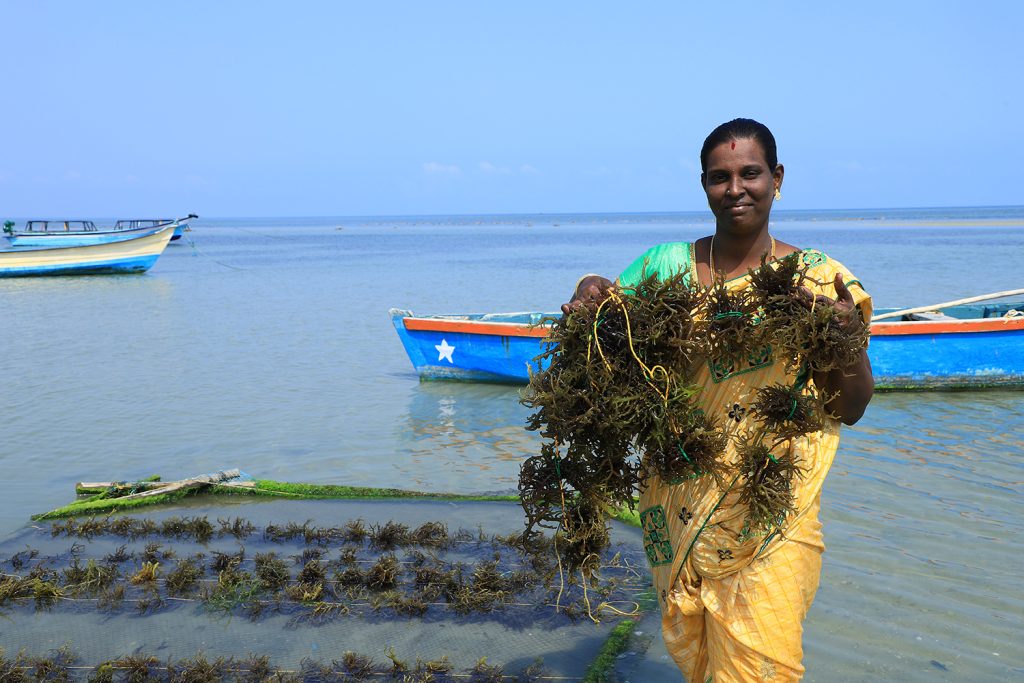Mariculture using cage farming, seaweed cultivation and IMTA could lead to ‘decent income’ for India’s coastal people

Mariculture has emerged as a promising business opportunity for India’s coastal regions, according to a new study by the ICAR-Central Marine Fisheries Research Institute (CMFRI).
The study, which was published in Frontiers in Sustainable Food Systems, examined the social, environmental, technical and economic aspects of 159 mariculture units such as cage farming, seaweed cultivation and integrated multi-trophic aquaculture (IMTA) in six coastal states including Kerala. The researchers concluded that mariculture could offer a decent income to the coastal people, even as extreme weather events like cyclones are leading to the reduction of fishing days every year.
In particular, cage fish farming in the open sea and coastal waters could yield an additional income of up to Rs. 3 lakhs (U.S. $3,600) per unit. The innovative practice of IMTA, which combines mussel or seaweed cultivation with cage fish farming, was found to generate even higher profits of Rs. 3.25 lakhs ($3,900) per unit.
Kerala exhibited higher profitability in coastal water cage farming compared to other coastal states, with nearly 40 percent of such units in the state generating an income ranging Rs. 2 lakhs to 3 lakhs ($2,400 to $3,600) per season.
The study also highlighted that mariculture augmented employment and gender inclusion among the coastal communities across the country. Marine cage farming and the IMTA generated 175-396 person-days of employment from one unit in a season lasting around eight months.
Seaweed cultivation along potential farming sites was also found to be “highly prospective,” given the increasing demand for seaweed-based products for culinary purposes and pharmaceutical and other industrial uses.
The study also identified challenges in the sector, including the scarcity of quality seed and feed. Less than 50 percent of farmers received good-quality seed for culture. Limited access to institutional credit to meet capital and operational costs were also reported as major constraints for the sector. Moreover, lead researcher Dr. Shinoj Parappurathu said that the lack of legislative provision “puts this prospective sector under the shadow of uncertainty, ultimately hindering large-scale business plans in mariculture.”
“Adequate legislative mechanism is required to ensure legitimate access for farmers to open water bodies,” said Parappurathu, who is a senior scientist at the CMFRI. “Respective state governments should intervene to provide this protection to farmers so that production could be augmented.”
Follow the Advocate on Twitter @GSA_Advocate
Now that you've reached the end of the article ...
… please consider supporting GSA’s mission to advance responsible seafood practices through education, advocacy and third-party assurances. The Advocate aims to document the evolution of responsible seafood practices and share the expansive knowledge of our vast network of contributors.
By becoming a Global Seafood Alliance member, you’re ensuring that all of the pre-competitive work we do through member benefits, resources and events can continue. Individual membership costs just $50 a year.
Not a GSA member? Join us.
Author
Tagged With
Related Posts

Responsibility
Is seaweed farming India’s untapped treasure?
Efforts are under way in India to harness the potential of seaweed by integrating seaweed farming with fisheries.

Innovation & Investment
‘They know better than men how to protect their environment and people’: How focusing on women farmers is boosting food security in India
GOAL 22: The Government of Odisha and WorldFish collaborate to boost income and food security in India by teaching women’s groups to raise carp.

Innovation & Investment
Expanding tilapia production in India could lead to ‘transformative’ socioeconomic gains
Expanding tilapia production in India could spur investment, provide new business opportunities and earn foreign currency through exports.

Intelligence
The fish farming industry of India
India is the second-largest producer of farmed freshwater fish with potential for further development as new species and production systems are adopted.



